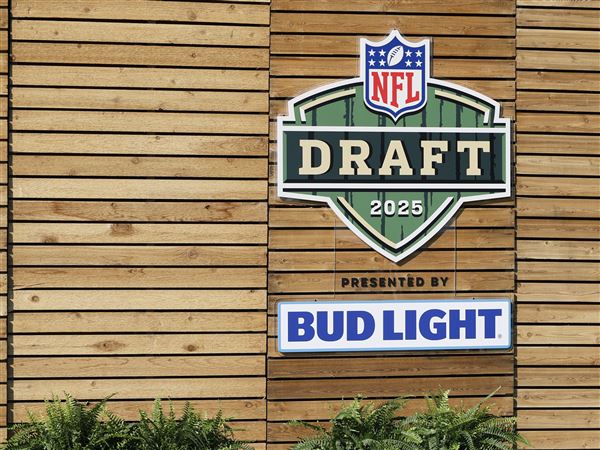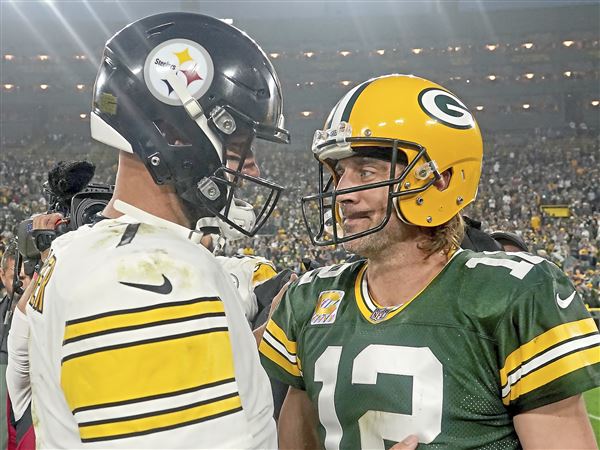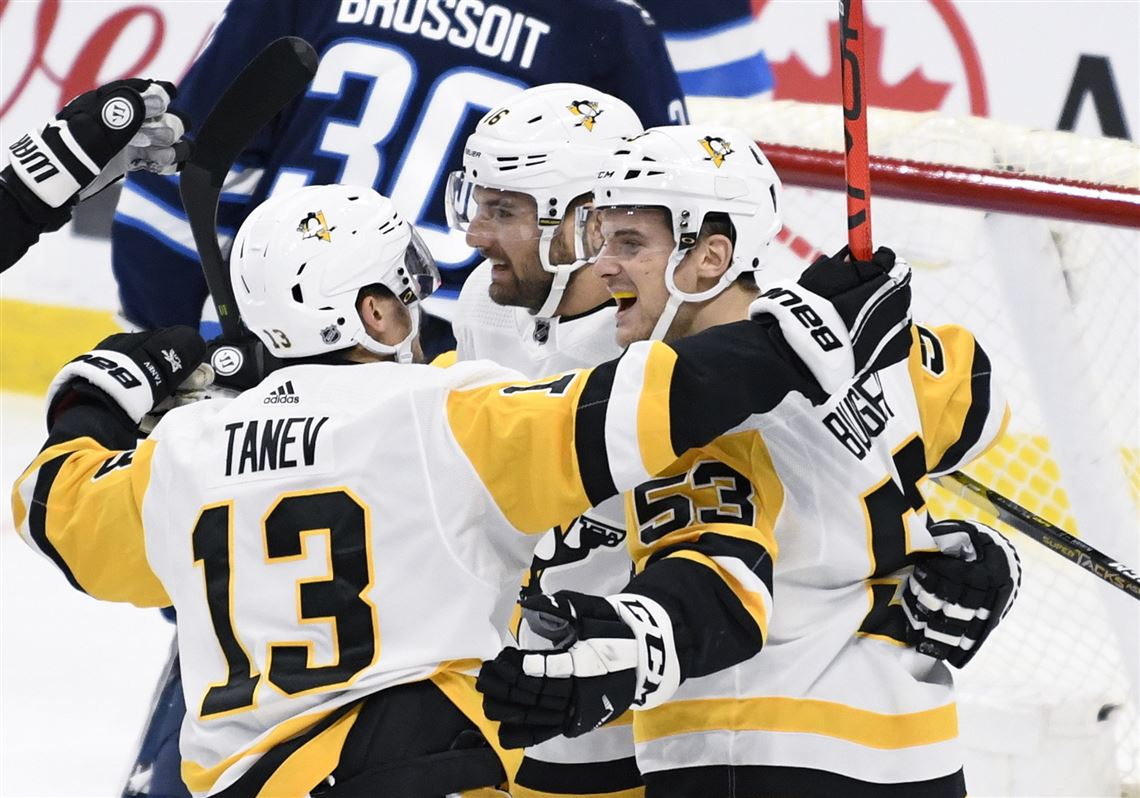NEWARK, N.J. — The Penguins got a lot out of their early injury epidemic.
They limped into valuable experience for a few of their youngest players. They fostered a resilient, hard-charging identity that they hope will still be there in April and May. They perhaps gained a greater appreciation for gauze, along with a reminder that Sidney Crosby remains one of the best players in the game.
Oh, and they also stumbled upon one of the league’s most obnoxious lines.
All offseason, after Matt Cullen’s retirement created a regular spot for Teddy Blueger, coach Mike Sullivan imagined this kind of role for Blueger, a savvy center who is sound defensively and has flashed 15-goal potential offensively.
“It all depended on who we surrounded him with,” Sullivan said Tuesday.
Early on, the Penguins tried players such as Dominik Kahun, Dominik Simon and Sam Lafferty alongside Blueger. None of those trios seemed to click.
So, heading into their Oct. 12 win in Minnesota, Sullivan decided to place pesky wingers Brandon Tanev and Zach Aston-Reese on a line with Blueger, not that the coach had much to choose from given all the injuries. At that point, his options were basically them, Patric Hornqvist and a couple of Zamboni drivers.
Four weeks and many frustrated opponents later, they’re still together.
“Since we’ve put that line together, we think that line has played consistently well at both ends of the ice,” Sullivan said. “They’ve chipped in on the offense. They’re hard to play against. We put them in defensive circumstances all of the time. They’ve embraced that role and they’ve done a really good job at it.”
In 115 minutes of shared ice time at five-on-five, that line, per NaturalStatTrick.com, has produced a 58.3% shot share, generated 46 total scoring chances and has more than twice as many high-danger chances than the guys they have gone up against, which includes some of the most productive lines in the league.
Translation: They are hogging the puck, tiring out more talented opponents and making goalies sweat, even if they have only four goals to show for it.
Sullivan has selectively used those three against the big guns from other teams as a way to ease the defensive burden on Crosby’s line. That has allowed Crosby and Jake Guentzel to focus a little more on scoring goals. The Blueger line, meanwhile, has allowed only two goals at five-on-five in all those minutes.
“Any time you get an opportunity to play against another team’s top line, they don’t want to play in their defensive end,” Tanev said. “The more time you spend in their end, the more difficult it is for them to get something going. And frustration sets in. And you want to be able to do that, provide that in a game.”
All three linemates can be irksome to play against for different reasons.
Tanev’s contributions to the Penguins since joining them this offseason have been well-documented. Quick summary: wins a lot of races, forces a lot of turnovers, blocks a lot of shots, hits a lot of people and draws a lot of penalties.
“He’s tenacious,” Blueger said. “Reeser and I kind of feed off that a little.”
Aston-Reese does some of those same things, though both his hits and his feet are heavier. Plus, he can be a tough guy to move in front or along a wall.
Blueger has an active stick and an uncanny knack for getting in the way. During a 10-second sequence in Monday’s 6-4 loss in Boston, he deflected or disrupted four passes while forcing the Bruins to double back deep into their zone.
“We’ve been able to create some odd-mans off turnovers,” Aston-Reese said.
When they don’t have numbers entering the zone, they just keep it simple.
“We don’t try to go east-west too much. We try to get in on the forecheck, put it in behind [their defense] and scrum it up on the wall, try to move it around,” he said. “If we’re not scoring, we’re setting up the next line for a good shift.”
Need more proof they’re playing a brand of hockey Sullivan loves? Look at their playing time. Against the Bruins, they all got more than Alex Galchenyuk, Nick Bjugstad and Jared McCann, three guys sprinkled throughout their top nine.
Aston-Reese believes their shared background in college hockey has helped them connect. And, no, it’s not because they’ve won a game of flip cup or two or are still alive today despite eating only Bagel Bites or Ramen for a week.
He said that with NCAA teams often getting five days to plan to face their next opponent, it can be a more tactical brand of hockey. “You do a lot of film, a lot of systems,” Aston-Reese said. So they have no problem playing within a structure.
“We know where we came from and how we want to play,” Tanev agreed.
Matt Vensel: mvensel@post-gazette.com and Twitter @mattvensel.
First Published: November 6, 2019, 12:41 a.m.





















